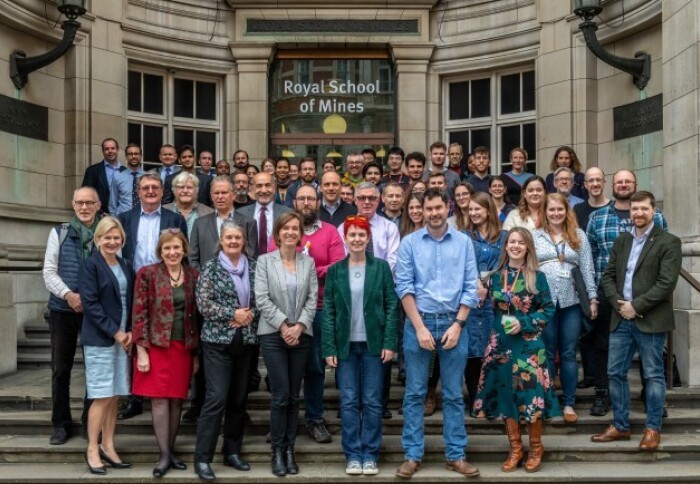Unique facility for energy materials launched at Imperial College London

A unique cryogenic microscopy facility has opened to enable new discoveries about materials critical to the energy transition.
Imperial College London's Department of Materials has launched its new Centre for Cryo Microscopy of Materials, the only facility of its kind globally. The multi-microscopy facility has cryogenic specimen preparation, transfer and analytical capabilities and cutting-edge equipment to investigate nanoscale materials.
Supported by the EPSRC, the facility will focus on researching energy materials for catalytic systems and batteries, as well as materials for soft and hard matter interfaces and biological systems. Moreover, the facility aims to act as a collaborative hub for scientists to address the UK's goal of achieving a sustainable zero-carbon future.
Professor Mary Ryan CBE FREng leads the College's Transition to Zero Pollution and is a co-investigator on this project. She comments:
"The new facility builds on the unique legacy of Imperial as a world leader in electron microscopy and in the application of frontier analytical tools aimed at solving real-world problems.
We are already gaining new understanding about complex materials systems including nitrogen-reduction catalysts, battery materials and magnetocaloric alloys – and we are just beginning to be able to deploy the full range of capabilities. We are looking forward to working across Imperial and with the wider materials community in the UK on some truly exciting and important challenges."
Professor Sandrine Heutz, Head of the Department of Materials, said:
"The team have done a fantastic job putting this project together, building up the complex infrastructure and integrating the new equipment with other state-of-the-art characterisation and fabrication tools in the department.
"This will create a unique environment for the understanding of the structure, composition and function at the nanoscale, and I look forward to transformative discoveries and collaborations to tackle today’s grand challenges, in particular our transition to net zero."
New discoveries ahead
The imaging methods used in ‘regular’ electron microscopy setups are often inadequate – and sometimes damaging - for visualizing elements such as hydrogen, lithium, carbon, and sulfur due to their lightweight and high mobility, making them prone to moving change or move during specimen preparation or imaging. However, the new facilities in the Centre for Cryo Microscopy of Materials will enable researchers to investigate these elements from the micro- to the atomic scale and in a quantitative manner by ‘freezing the atoms in place’ and preserving interfacial environments.
Using the facility, researchers will be able to use a unique approach of combining techniques such as transmission electron microscopy, atom probe tomography, and cryogenic and vacuum transfer between instruments. The aim is to develop a comprehensive understanding of these materials, which have crucial roles in the transition to a sustainable future society - including hydrogen production and storage, battery technologies, and the decarbonisation of industrial processes, as well as a range of challenges at the engineering-medicine interface.
By using this new approach, researchers will be able to adapt the imaging methods to suit the specific characteristics of the materials being studied and achieve a detailed understanding of them at various levels.
Professor Baptiste Gault and Professor Finn Giuliani are co-leading the new facility. Professor Baptiste Gault commented:
"It’s fantastic to see how much has been achieved, from a concept devised three and a half years ago to finally seeing instruments being used, early-career scientists developing skills and knowledge and starting to deliver game-changing results."
Cool collaboration
The objective of the facility is to function as a collaborative centre where scientists can work together for a sustainable, zero-carbon future.
Find out more about the Imperial Centre for Cryo Microscopy of Materials.
Article text (excluding photos or graphics) © Imperial College London.
Photos and graphics subject to third party copyright used with permission or © Imperial College London.
Reporter
Kayleigh Brewer
Department of Materials








